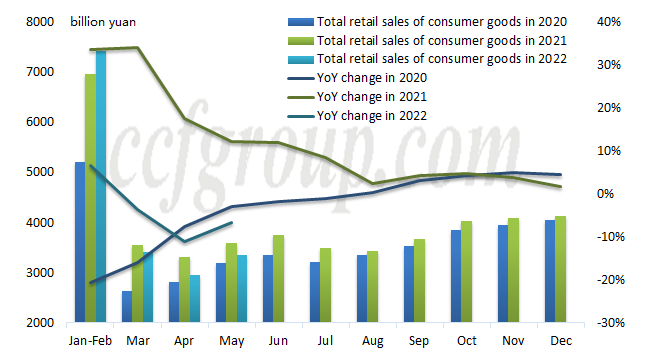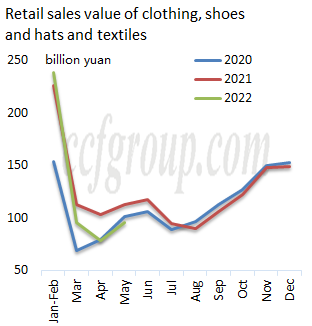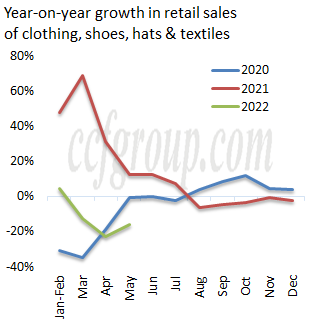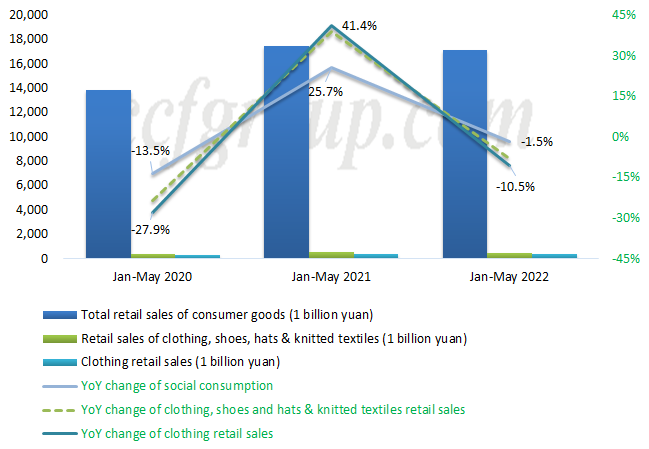Nylon filament yarn sees escalating contradiction in July?
In June, nylon raw materials market fluctuated sharply. The deep decline in the second half of June had given up all the gains since the beginning of May. A gap has formed between CPL contracts and spot prices. At the same time, downstream demand continued to be weak, and nylon 6 textile filament factories had not yet caught up previous increase in the cost, and had passively complied with the raw materials and transferred to the downward channel.
1. Decline in nylon raw materials restricts NFY sales, but also eases the pressure of loss
The rapid rise and fall of raw materials had the greatest impact on sales of nylon 6 filament factories this month. Early in the month, due to the limited recovery of orders in fabric mills, the price of fabrics was difficult to rise, and the resistance to the rise of nylon filament gradually strengthened with the sharp increase of raw materials. So it was difficult for nylon filament mills to receive orders at high quotation levels.
When the raw materials turned to fall in the middle and late period of June, fabric factories quickly entered a risk-averse wait-and-see state, reducing purchases or even reducing production. The pressure on filament factories was more prominent than when prices were rising. However, for filament mills that mainly purchased contract raw materials, the losses narrowed down as the settlement price was much lower than previous nomination.However, nylon filament stocks were still rising, and there were still many uncertainties about the trend of raw materials. For filament mills, the actual profit and loss of unrealized inventory is unknown.
2. Terminal consumption is being repaired, but not enough

Affected by the epidemic in April, China’s total consumption dropped sharply by 11.1% year-on-year. In May, the epidemic was gradually put under control, and consumption was significantly repaired, with a month-on-month increase of 13.8%, but a year-on-year decrease of 6.7%. The repair of demand was not enough.


The epidemic has weakened textiles and clothing consumption significantly higher than the average level of total consumption. The consumption trend of textiles, clothing, shoes and hats is similar to the total consumption, but as a category of essential consumer goods, the consumption for this category had shrunk too much in April. In May, the consumption increased by 21.1% month-on-month, but decreased by 16.2% year-on-year, a larger decline than total consumption.

From January to May, the year-on-year decrease in the cumulative consumption of clothing was more obvious. From January to May, total consumption fell by 1.5% year-on-year, while clothing consumption shrank by 10.5% year-on-year, a much larger decline than total consumption. The reasons for the decline in clothing consumption mainly included restricted seasonal clothing consumption under the epidemic, and lower disposable income amid inflation and the epidemic. Some of these influencing factors are temporary (such as seasonal consumption, after the epidemic has stabilized, there is still room for seasonal demand to recover), while some are long-term, such as inflation and disposable income growth pressure.
The epidemic in China has entered a stable period. It is foreseeable that there is still room for repair of China domestic clothing consumption, but the speed and intensity of repair are a way lower than that of 2021.
3. Fabric mills are in self-adjustment
After the epidemic, the production of the fabric factory has recovered, but in the early stage of the recovery, the cost had risen sharply, which had caused the fabric factories, who had suffered the backlog of inventory and fierce price competition due to the epidemic, to fall into "less production and less loss" or "guarantee sales at the cost of loss" dilemma.
Immediately afterwards, the rapid decline of raw materials aggravated the panic of fabric factories, and the risk aversion operations of reducing production and purchasing increased. The untimely rise and fall of raw materials disrupted the normal recovery rhythm of the fabric link. The order taking of fabric factories above scale has improved in the middle and late June, but the textile industry is in the off-season, and the degree of improvement in orders cannot evidently reduce the already high inventory of filament and fabrics.
At present, nylon 6 textile filament market is "very poor":
(1) The peers compete at low prices, and the pressure of loss increases.
(2) The buyer's purchasing enthusiasm is not high, and the inventory pressure of NFY mills increases.
(3) The recovery in end user's market is insufficient, and order taking of fabric factories is slow. It is difficult to alleviate the contradiction between supply and demand in the industrial chain from the demand side.
(4) Market capital flows are still being tightened.
(5) The raw materials are bearish, the bottom is not clear for the time being, and the stock may face the risk of depreciation.
(6) During the hot summer time, and production costs such as air-conditioning fees are gradually rising.
At present, nylon textile filament mills are no doubt uncomfortable, and the pressure in July may be even greater. So, there are increasing number of NFY mills reducing production or planning to reduce production. However, the demand for fabric, and textiles and clothing is slowly recovering, and July is actually a period of rebalancing between filament, fabric, and textiles and clothing. From late July onwards, the contradiction between upstream and downstream may gradually reduce.
- Top keywords
- Cotton Price
- Cotton Futures Price
- Cotton Futures
- CZCE
- PTA Futures Price
- Chemical Fiber
- Polyester Prices
- Wool price
- PTA Futures
- Shengze Silk
- China
- Yarn Price
- price
- China Textile City
- Fibre Price
- Benzene Price
- Cotton
- Index
- Cotton Index
- PTA
- fabric price
- NYMEX
- Top 10
- textile industry
- Spot Cotton
- Cotton Yarn
- Polyester Price
- Futures
- PTA Price
- cotton yarn price

